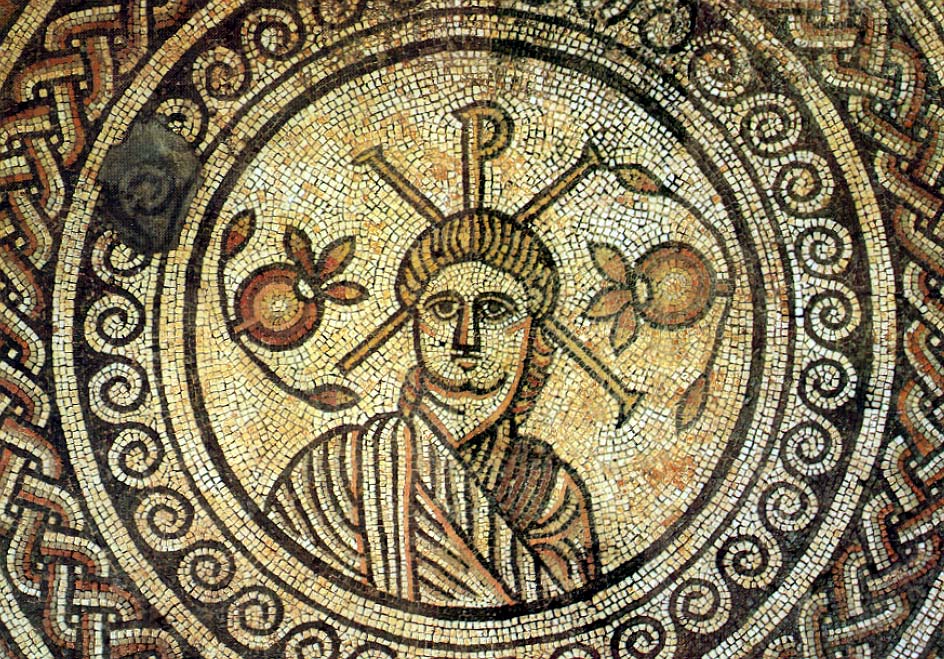Tags
Thursday this week saw a full house for Dr Peter Guest’s talk ‘New Fieldwork at Hinton St Mary, Dorset: The Mosaic in Context’.
The new lecture room was warm and welcoming, the new lift fully in action. the talk excellent.
The extraordinary mosaic was found by chance when a young man was sent by his employer to dig a hole outside a blacksmith’s in Hinton St Mary in 1963. Small coloured tiles – tesserae – began to appear!
In June of last year, Peter wrote this on his website:
“This is the 3rd and final excavation season of The British Museum’s research project to find out more about the famous Roman mosaic discovered here exactly 60 years ago, and the mysterious ‘villa’ to which it apparently belonged.
This is also a training excavation and we’re pleased to welcome undergraduate archaeologists from Cardiff University again, as well as several early-career archaeologists helping out as volunteers.
Pupils from Yewstock School in Sturminster Newton will also come and visit the dig to see what the archaeologists are up to and help us reveal Hinton’s Roman past.”
The original 1960s excavation suggested a very large villa. The whole mosaic (the famous roundell is just the centrepiece) would clearly have provided flooring for two adjoining rooms. Peter said that the design tells us it is late Roman with what had become typically Romano-British features. It is one of the finest ever uncovered, suggesting great wealth involved, and suggesting it was designed and constructed for more important reasons than having just a pretty floor. The mystery, and perhaps the answer to why it was built, is the figure in the centre.
It is a mosaic picturing a Roman man, in toga, clean-shaven. The great surprise is the early Christian symbol behind the head – the chi rho – which, in that position, must be a statement about him. It has been thought that the image is of Jesus, who was sometimes depicted as Roman, but never without a halo, which seems to be missing in this mosaic.
Others think it is Constantine I (AD306 – 337), the first Roman emperor to become a Christian (after AD312).
The whole mosaic was bought by The British Museum after the original excavation, and moved to London in sections. Originally displayed there, it is now in store.
Peter Guest’s excavations were spread over three years, ending only recently, and he and his team were able to show that the buildings originally uncovered actually spread in an unexpected direction, and that two large rectangular open porches may have flanked the two rooms in which the mosaic lay.
Interpretation now follows. Read the on-going story here… It seems there is an intriguing mystery. Does the answer lie somewhere under the village of Hinton St Mary itself?


